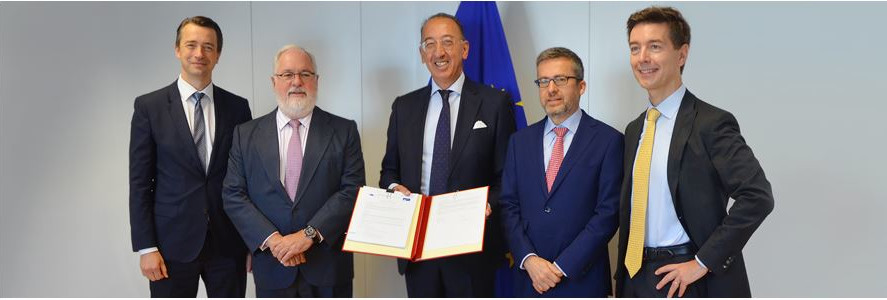

The European Council formally adopts the Joint Action that officially creates the European Defence Agency. Shortly after, Nick Witney is appointed Chief Executive of the Agency by Javier Solana, EU High Representative for the Common Foreign and Security Policy.
The European Council formally adopts the Joint Action that officially creates the European Defence Agency. Shortly after, Nick Witney is appointed Chief Executive of the Agency by Javier Solana, EU High Representative for the Common Foreign and Security Policy.
The Steering Board agrees that the Agency should gradually take over the activities of the Western European Armaments Group (WEAG) and the Western European Armaments Organisation (WEAO) by the first quarter of 2006.
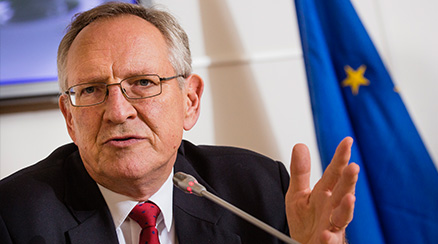
Absorbing the work of WEAG and WEAO into EDA will give R&T collaboration a much stronger political impulse.
Nick Witney EDA Chief Executive (2005)EDA Steering Board of Defence Ministers approves an “intergovernmental regime to improve the transparency and promotion of competition in the European defence equipment market” together with a “Defence Procurement Code of Conduct”.
The first R&T contract is awarded by EDA to a consortium led by Patria for a study regarding remotely piloted air systems (RPAS), technologies and focusing on “Digital Line of Sight & Beyond Line of Sight Data Links”.
The first EDA Annual Conference gathers high-level officials from Member States and EU institutions, providing the first major opportunity to engage with stakeholders around the Agency’s new agenda.
An administrative arrangement is signed with Norway, enabling the country to take part in EDA projects and programmes.
The Measures to support the implementation of EDA’s “Defence Procurement Code of Conduct” are approved. Shortly after, the Executive Committee of the Aerospace and Defence Industries Association of Europe (ASD) agrees to co-sign the Code of Best Practice in the Supply Chain (CoBPSC), committing its members to abide by this Code when it is technically and financially viable in its subcontracts.
A Code of Conduct for promoting competition in defence procurement is launched and subscribed to by all EDA Member States.
Work begins on the first Joint Investment Programme (JIP) on Research and Technology. The programme set out to study 18 technologies relating to five military capabilities focused on protecting the Armed Forces. Nineteen countries join the 55 M€ programme, including Norway.
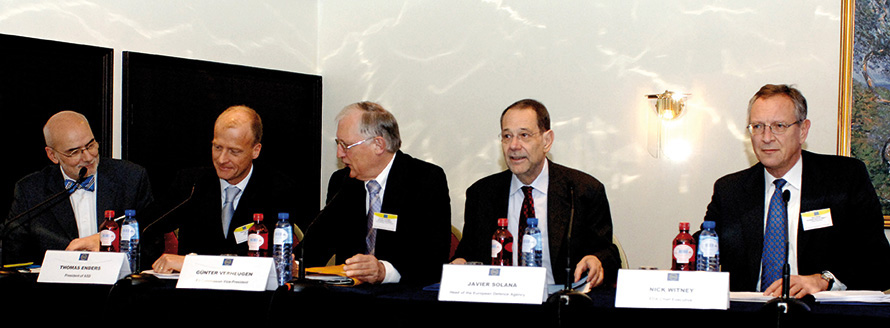
Bulgaria and Romania join the European Defence Agency.
The second EDA Annual Conference takes place, this time focusing on the European Defence Technological & Industrial Base (EDTIB). This lays the ground work for the approval of Europe’s Defence Technological and Industrial Base Strategy in May the same year.
Strategies are needed - they provide direction and define aims but, naturally, they themselves do not deliver capabilities. We need concrete programmes and projects to turn theory into practice. This is where I want to see change
Alexander Weis EDA Chief Executive (2007)Alexander Weis, who was previously acting as Chief of Staff in the Directorate General of Armaments of the German Ministry of Defence, is appointed as EDA Chief Executive by Javier Solana. He takes office in October.
The Agency signs first contracts under a new R&T Joint Investment Programme dedicated to Force Protection, representing a total investment of more than € 13 million.
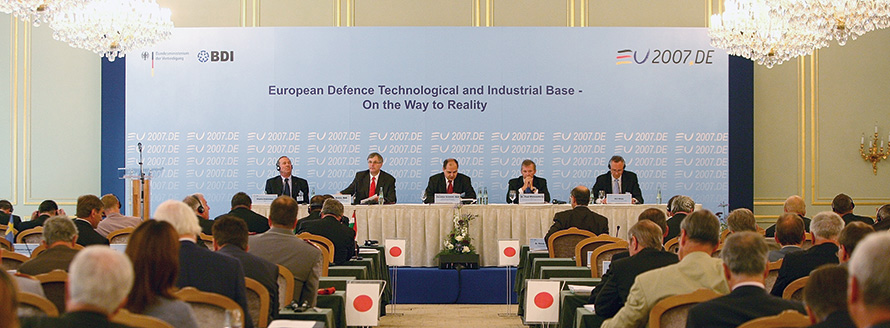
Defence Ministers launch the Agency’s second Joint Investment Programme, on emerging technologies that may negatively impact the battlefield (Disruptive Defence Technologies). Eleven countries join the project, investing a total of 15.5M€.
The Steering Board endorses the initial version of the Capability Development Plan (CDP), developed in close cooperation with participating Member States, the Council Secretariat and the EU Military Committee with the support of the EU Military Staff. A driver for the work of all the Agency’s Directorates, the CDP is designed to be a strategic tool and to define future capability needs from the short to longer term. The CDP intends to inform national plans and programmes, but is not a supranational plan. It is designed to be constantly refreshed to take into account evolving strategic challenges as well as Member States’ potential new priorities.
A declaration of intent is signed by 12 countries to establish a European Air Transport Fleet (EATF), with the objective of reducing European air transport shortfalls by all means available. At the same time, ten Member States plus Norway agree to work together for the future replacement of their maritime mine countermeasures (MMCM) capabilities.
The fourth annual conference of the Agency focuses on shortfalls in helicopter capabilities. It paves the way for the approval of the Helicopter Training Programme a few months later, in November. The same month, the first EDA Helicopter Exercise is hosted in the French Alps, marking the beginning of a series a successful rotary-wing training event that are now hosted by partner Member States on an annual basis. Work is launched on the establishment of a Procurement Cell to coordinate EU Member States’ orders of commercial satellite communication services. Beginning as a three-year pilot project, this successful initiative will later evolve into what is now known as the EU Satcom Market.
The Steering Board endorses the initial version of the Capability Development Plan (CDP), developed in close cooperation with participating Member States, the Council Secretariat and the EU Military Committee with the support of the EU Military Staff. A driver for the work of all the Agency’s Directorates, the CDP is designed to be a strategic tool and to define future capability needs from the short to longer term. The CDP intends to inform national plans and programmes, but is not a supranational plan. It is designed to be constantly refreshed to take into account evolving strategic challenges as well as Member States’ potential new priorities.
The Defence and Security Procurement Directive is adopted by the European Parliament and the Council. It sets community procurement rules which are adapted to the specificities of the defence and security sectors. It allows, for example, the use of the negotiated procedure with publication as the standard procedure and provides special provisions for security of supply and security of information.
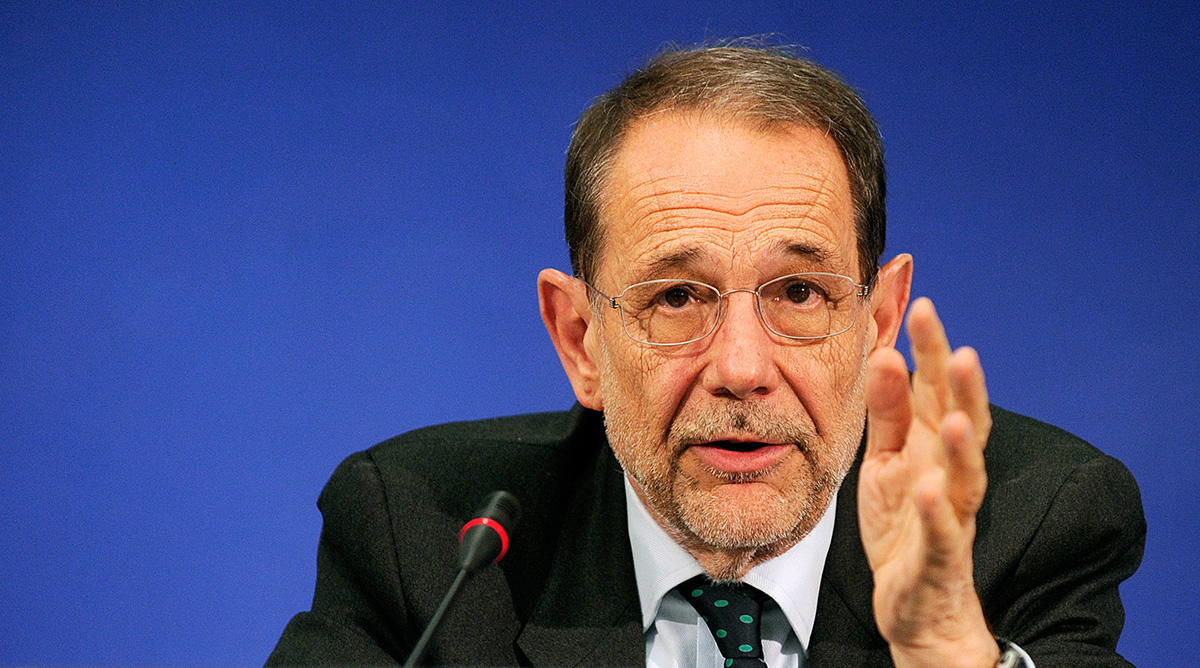
The Helicopter Training Programme is another tangible result of the European Defence Agency’s work. It will deliver immediately more helicopter capabilities, which we all know is a continuous shortfall in deployed operations
Javier Solana Head of EDA and High Representative of the EU for Foreign Affairs and Security Policy, 2009Catherine Ashton is appointed as High Representative of the Union for Foreign Affairs and Security Policy and Vice-President of the European Commission. Starting 1 December 2009, she acts as Head of the European Defence Agency and leads its Steering Board.

The annual conference focuses on civil-military cooperation under the heading “Bridging Efforts - Connecting Civilian Security and Military Capability Development”.
A “Wise Pen Team” of five admirals submits its report to the Ministerial Steering Board regarding Maritime Surveillance needs in support of CSDP, effectively paving the way for EDA’s work as part of the Marsur program.

The Agency has quickly reacted to the needs of European Defence Ministers, who are looking for opportunities to work closely together in order to improve capabilities while budgets are under pressure. Pooling and sharing offers potential for savings, while increasing interoperable capacities
Catherine AshtonHead of EDA and High Representative of the Union for Foreign Affairs and Security Policy (2010)The European Defence Agency and the European Commission co-organise a conference dedicated to Unmanned Aircraft Systems (UAS). Over 450 senior government officials and industry representatives gather to discuss the potential of UAS for European users, their economic, technological and industrial impact, as well as a common European way forward.
A new cooperative idea arises under the Belgian presidency of the EU. Following an initial German-Swedish food for thought paper known as the “Ghent initiative” and presented during an informal meeting of the Defence Ministers, the concept of “Pooling & Sharing” national military capabilities emerges. It will guide the Agency’s actions and projects for the following years.
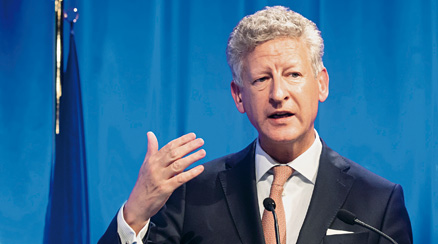
There is now a widespread understanding that the “pooling and sharing” of military capabilities - doing more together - is an effective response, if not the only possible response, to the financial and military pressure we face. It allows us to deliver more with less. It has become a must, rather than an option
Pieter De CremBelgian Minister of Defense, 2012Claude-France Arnould succeeds Alexander Weis and becomes the Agency’s third Chief Executive. She joins initially from the European Council, where she was Deputy Director-General for the Crisis Management and Planning Directorate (CMPD), integrated in the EEAS in 2010.
A new EDA initiative is launched on Effective Procurement Methods in order to find innovative ways to consolidate the demand side of the European Defence Equipment Market.
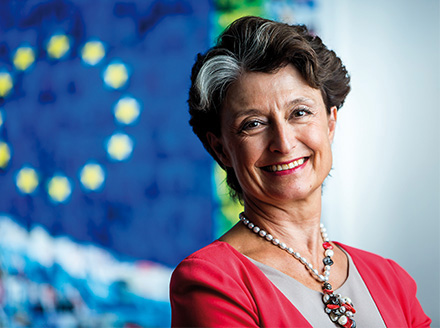
Pooling & Sharing should not be a pretext to reduce efforts. It is a way to harness and maximise investment. My message is that Pooling & Sharing is not excuse to invest less; rather, that it offers a way to acquire together what is out of reach individually and get more efficiency in the employment of these capabilities. Defence effort must remain at the right level in order to ensure European defence is strong and sustainable
Claude-France ArnouldEDA Chief Executive (2011)The Theatre Exploitation Laboratory reaches initial operating capability in Afghanistan. This successful EDA project launched in 2010 aimed to develop and build a forensic laboratory to analyse Improvised Explosive Devices (IEDs) recovered from incidents. The European Defence Agency and the European Commission sign a European Framework Cooperation (EFC) coordination letter. Through this signature, both institutions agree to harmonise their research activities in this specific case in the field of Chemical, Biological, Radiological and Nuclear protection.
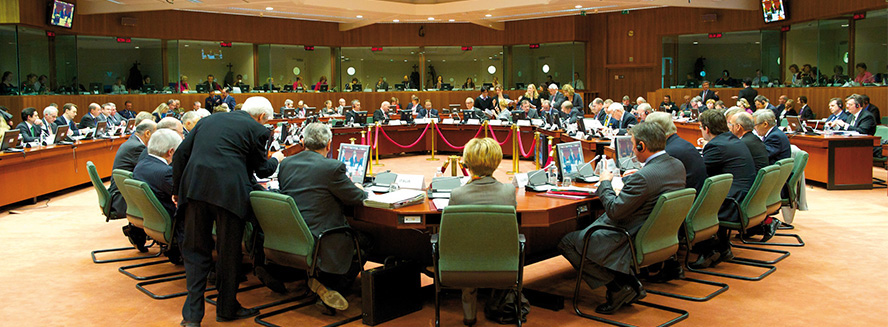
A framework for cooperation is signed between the European Defence Agency and Switzerland, enabling Swiss participation in EDA’s projects and programmes.
The first European Air Transport Training event (EATT2012) organised by the Agency takes place in Zaragoza, Spain, bringing together tactical air transport assets from six Member States.

The Agency signs an administrative arrangement with the Organisation for Joint Armament Cooperation (OCCAR), ensuring closer collaboration between these two majors actor in European defence cooperation.
The first framework contract is signed with industry as part of the European Satellite Communications Procurement Cell (now EU Satcom Market).

Defence Ministers endorse a Code of Conduct for Pooling & Sharing, thus ensuring that a cooperative approach for the entire life cycle of the product will be considered whenever a Member State is thinking of developing a new capability. Ministers of Defence of twelve Member States sign the Helicopter Exercise Programme Program Arrangement for a duration of ten years.
Herman Van Rompuy, President of the European Council, addresses the defence community at the European Defence Agency’s annual conference, dedicated to long-term Pooling & Sharing solutions.
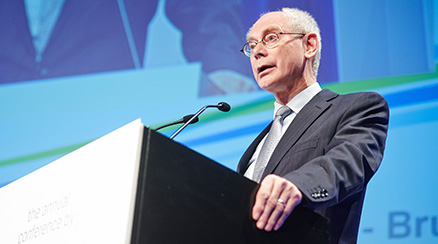
Defence cooperation is not about the management of decline, it is quite the opposite. It is the way to ensure we remain cutting-edge and fully play our role in the future!
Herman Van RompuyPresident of the European Council (2013)The Steering Board approves an Agency initiative to promote the best use of European Structural Funds (ESF) by defence actors with six dual-use pilot projects. Member States approve the establishment of a dedicated programme for the military implementation of the Single European Sky ATM Research (SESAR) Joint Undertaking. EDA is in charge of coordinating military views and of identifying potential operational and financial risks for military users.
The European Defence Agency and the European Aviation Safety Agency (EASA) sign an arrangement for enhanced cooperation between the two structures, specifically covering harmonisation of military aviation safety requirements with a focus on airworthiness.
Croatia joins the European Defence Agency on 1 July.
The European Defence Agency, Italy and the Movement Coordination Centre Europe (MCCE) jointly organise the first collective European Air-to-Air Refuelling (AAR) clearance trial on the Italian KC-767, in order to improve Europe’s global AAR capabilities.
EDA signs an administrative arrangement with the Serbian Ministry of Defence, enabling Serbia’s participation in the Agency’s projects and programmes. Focused on defence matters, the European Council of December 2013 provides a new impetus and high-level support for the Agency’s work. EDA is given a wide range of tasks, including responsibility for four key programmes : air-to-air refuelling, remotely piloted aircraft systems, cyber defence and governmental satellite communications. The Council also gives EDA various tasks to help strengthen Europe’s defence industry - increasing SME participation and dual-use research, and improving European certification and standardisation.
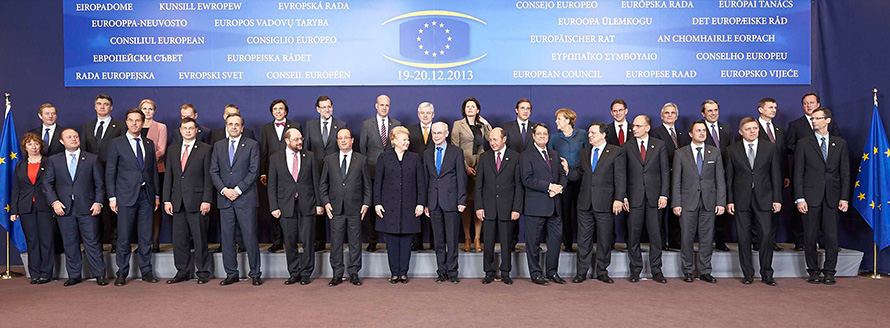
The European Defence Agency puts a new structure in place as of 1 January 2014 in order to better support Member States in a rapidly evolving environment. The Agency is re-organised in three operational directorates: Cooperation Planning & Support; Capability, Armaments & Technology; and European Synergies & Innovation. This is meant to facilitate prioritisation of tasks and improve operational output.
The first EDA-supported dual-use project, called “Turtle”, receives European Structural Funds. Developed by a consortium of Portuguese SMEs, research institutes and universities, its aim is to produce new robotic ascend and descent energy efficient technologies to be incorporated in robotic vehicles used by civil and military stakeholders for underwater operations.
Claude-France Arnould signs a procurement arrangement with General Sir Adrian Bradshaw, Operation Commander of EUFOR Althea and Deputy NATO SACEUR, in direct support of an EU operational mission. Under this arrangement with EUFOR Althea, EDA assumes a lead role in administering the procurement procedure of air-to-ground surveillance services in Bosnia-Herzegovina.
The European Defence Agency and Saab Dynamics AB sign a multi-annual framework agreement for the provision of different types of ammunition for the ‘Carl-Gustaf’ recoilless anti-tank weapon, with an estimated value of up to € 50 million. This framework agreement comes under a procurement arrangement signed in 2013 between EDA and Estonia, Latvia, Lithuania, the Czech Republic, and Poland
The Agency celebrates its tenth birthday.
EDA organises a joint three-day European Armaments Cooperation Course with the European Security and Defence College (ESDC) to support Member States enhance their interoperability in this crucial domain.
Jorge Domecq, a senior Spanish diplomat, is appointed as new Chief Executive, taking office on 2 February 2015. Before joining EDA, Jorge Domecq, was Ambassador Permanent Representative of Spain to the OSCE and prior to that, had served as Ambassador of Spain to the Republic of the Philippines. He also held numerous positions with the Spanish Ministry of Foreign Affairs and served as Director of the Private Office of the NATO Secretary General and as Diplomatic Adviser to the Spanish Minister of Defence.
EDA and the Athena mechanism (established to administer the financing of the common costs of European Union operations having military or defence implications) sign an arrangement establishing the framework for future cooperation.
The new Secretary General of the European External Action Service (EEAS), Alain Le Roy, visits EDA to discuss the Agency’s priorities.
EDA and the SESAR Deployment Manager (SDM) sign a Memorandum of Understanding establishing an efficient cooperation between the two organisations with regard to SESAR (Single European Sky Air Traffic Management Research) deployment.
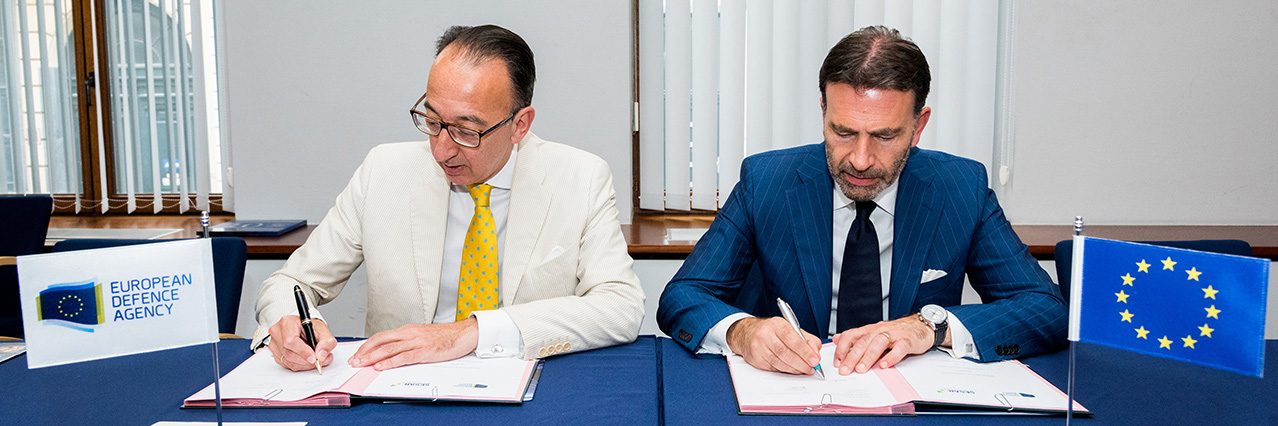
The High Representative of the Union for Foreign Affairs and Security Policy, Vice-President of the Commission and Head of EDA, Federica Mogherini, visits the Agency for the first time. She meets with the Agency’s Management Board before addressing the staff. “I want defence cooperation to be the rule, not the exception. EDA is providing the necessary impetus and means to make this a reality. Your collective role is vital. We are here for results and concrete achievements – and I know you deliver”, she said.

I want defence cooperation to be the rule, not the exception. EDA is providing the necessary impetus and means to make this a reality. Your collective role is vital. We are here for results and concrete achievements – and I know you deliver
Federica Mogherini High Representative and Head of the European Defence AgencyA Strategic Decision-Making Course and a Cyber Crisis Management Exercise are held in Vienna - a joint initiative of EDA, the European Cyber Security Initiative (Estonia), the Austrian Ministry of Defence and the Austrian Ministry of Interior.
The new Council Decision (CFSP) 2015/1835 of 12 October 2015 defining the statute, seat and operational rules of EDA is adopted by Member States. It revises a Council decision of 12 July 2011 which had replaced the Joint Action of the Council of Ministers of 12 July 2004 by which the Agency was created.
With the new Council decision in place (see previous news), cooperative defence projects and programmes can benefit from VAT exemption whenever the Agency adds value to the initiative.
The VAT exemption is a strong incentive to European defence cooperation: it generates an attractive business case for cooperative projects and programmes in the framework of the EDA
Jorge Domecq EDA Chief ExecutiveEDA and OCCAR (Organisation Conjointe de Coopération en matière d'Armement) strengthen their cooperation with the signing of a revised guidance document defining the terms of cooperation between the EDA and the Executive Administration of OCCAR as well as between the EDA and OCCAR Member States. The new document develops concepts of cooperation in a more detailed and pragmatic manner with a view to introducing greater synergies in terms of project or programme management.

Jorge Domecq, Chief Executive of the European Defence Agency, Tim Rowntree, Director of the Organisation for Joint Armament Cooperation (OCCAR).
EDA hosts a first Hybrid Threats Table Top Exercise (TTX) gathering around 80 experts from Member States, the European Commission, the European External Action Service (Crisis Management and Planning Directorate, EU Military Committee, EU Military Staff), CERT, ENISA and Europol, as well as observers from NATO. The objective was to identify and analyse implications of hybrid threats for European military capability development. It was followed in June by a second TTX which looked into the different capability areas where shortfalls and vulnerabilities have been indicated.
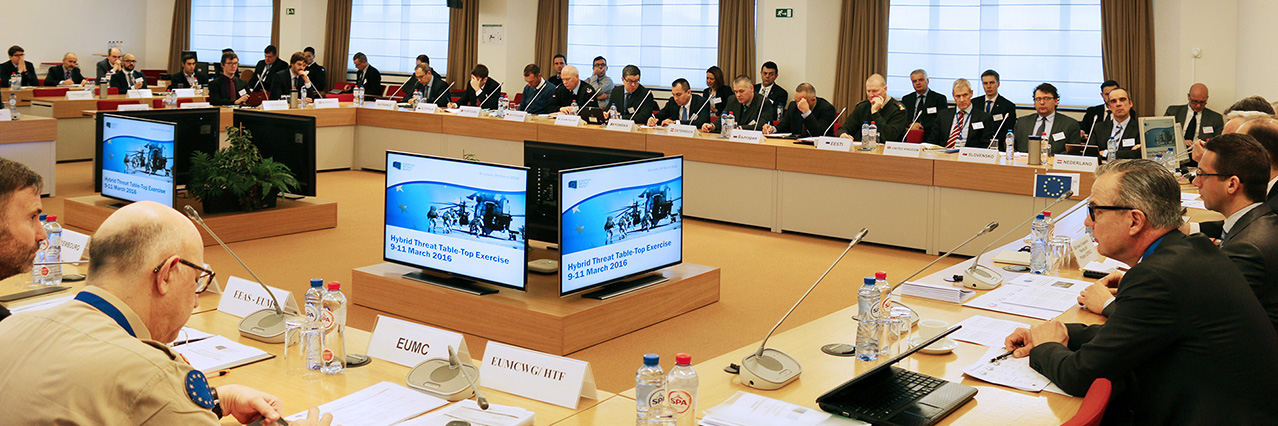
EDA, in cooperation with the then Dutch EU Presidency, holds a major R&T Conference in Amsterdam, focused on future technologies and innovation models likely to affect European defence capabilities. Discussions centred on emerging and critical technologies such as cyber, robotics and Artificial Intelligence (AI).
The EU Global Strategy on Foreign and Security Policy (EUGS) is presented by HR/VP and Head of EDA, Federica Mogherini. Only the second of its kind since the 2003 European Security Strategy, the EUGS sets a new level of ambition in relation to defence and military capabilities, in particular by insisting on the need for Europe to develop “an appropriate level of strategic autonomy” in order to guarantee its security and that of its citizens. It also underlines that “Member States will need to move towards defence cooperation as the norm” and urges them to make “full use” of EDA’s potential. The EUGS laid the groundwork for subsequent EU defence initiatives such as CARD, PESCO and the European Defence Fund.
The EU-NATO Joint Declaration is signed in the margins of the July NATO Summit in Warsaw, meant to reinvigorate end enhance cooperation between the two organisations. Six months later, on 6 December 2016, a set of 42 pragmatic and ambitious follow-up measures are adopted in parallel by the Council of the European Union and the North Atlantic Council at the Foreign Ministers level in Brussels.
Member States will need to move towards defence cooperation as the norm
Federica Mogherini High Representative and Head of the European Defence AgencyGrant agreements worth a total of €1.4 million are signed at EDA for the implementation of three selected research activities to be carried out under the EU’s first Pilot Project in the field of defence research. The signing, attended by European Commission Deputy Director General Pierre Delsaux, marks an important step in EU defence integration since it’s the first time that the EU is testing the conditions for defence research in an EU framework, funded by the EU budget. The Pilot Project paves the way for the launch, in 2017, of the European Commission’s Preparatory Action on Defence Research (PADR).
The Executive Directors of four key European agencies dealing with security and defence (European Union Agency for Network and Information Security - ENISA, Europol’s European Cybercrime Centre - EC3, the EU institutions’ permanent Computer Emergency Response Team CERT-EU and the European Defence Agency) meet at the EDA premises to identify and discuss cooperative opportunities in cyber security and defence.
EDA and SESAR JU (Single European Sky Air Traffic Management Research Joint Undertaking) sign a Memorandum of Cooperation that promotes collaboration on the next phase of research and innovation in air traffic management (SESAR 2020).
.jpg)
Rose Gottemoeller, NATO’s Deputy Secretary General, visits EDA to discuss the implementation of the EU-NATO Joint Declaration in which the Agency plays a central role. It is the first time such a high-level NATO representative visits the European Defence Agency.

The Swiss government announces that the country will participate in its first EDA project under the ‘Framework for Cooperation’ agreed with the Swiss ministry of Defence in 2012. The research project in question deals with the Protection of Autonomous Systems against Enemy Interference (PASEI).
Following a proposal by the Head of Agency, EDA Member States decide unanimously to extend the initial 3-year mandate of Jorge Domecq as the Agency’s Chief Executive for an additional 2 years (up to 1 February 2020). The extension comes at a particularly critical time when EDA is called to play an important role in the implementation of the EU Global Strategy and subsequent EU defence initiatives, as well as of the EU-NATO Joint Declaration.
The Council of the European Union approves the modalities to establish the Coordinated Annual Review on Defence (CARD) starting with a ‘trial run’ involving all Member States as of autumn 2017. In its role as CARD Secretariat, EDA will during this trial run compile all available information on participating Member States’ defence expenditure and capability development plans, followed by bilateral dialogues between participating Member States and EDA and the EU Military Staff in order to complete, discuss and clarify the data. A final CARD Trial Run Report is to be presented to Member States in autumn 2018.
The project arrangement for EDA’s first ever cyber defence ‘Pooling & Sharing’ project is signed by 11 contributing Member States. The ‘Cyber Ranges Federation Project’ intends to increase the availability of existing and emerging cyber range facilities and to improve cyber defence training, exercises and testing at European level.

At a ministerial EDA Steering Board meeting chaired by Federica Mogherini, Member States’ Defence Ministers endorse the conclusions and recommendations of the Agency’s Long Term Review (LTR). The LTR had been launched in summer 2017 with a view to reinforcing the Agency to keep it fit for purpose in the light of upcoming, more ambitious tasks and challenges deriving from the EU’s new Global Strategy. The agreed LTR conclusions strengthen EDA as the main intergovernmental prioritisation instrument at EU level in support of capability development. They also identify and enhance EDA as the preferred cooperation forum and management support structure at EU level to engage in technology and capability development activities, ranging from R&T to critical enablers, exercise and training as well as support to operations, including the industrial dimension. Finally, the Agency is also reinforced as an interface between Member States and EU institutions and as a central operator for EU-funded defence-related activities.

The European Commission and EDA sign a Delegation Agreement by which the Commission entrusts the Agency with the management of the Preparatory Action on Defence Research (PADR) to be launched in early June. The aim of the Preparatory Action, the first substantial EU funded action for defence research, is to demonstrate the added-value of EU-funded research in the defence sector and lay the grounds for a fully-fledged EU defence R&D programme in the Multi-annual Financial Framework commencing in 2021.

EDA published the first calls for proposals for the EU’s Preparatory Action on Defence Research (PADR), covering three domains: a technological demonstrator for enhanced situational awareness in a naval environment; research in technology and products in the context of Force Protection and Soldier Systems; strategic technology foresight. The budget for the PADR related actions in 2017 is €25 million.
The Head of the Agency, Federica Mogherini, and the Minister of Defence of Spain, Dolores de Cospedal, open the European Tactical Airlift Centre (ETAC) in Zaragoza. The opening of ETAC marks an important step forward in European defence cooperation as well as joint collaboration with the establishment of a permanent operational base for advanced tactical airlift training. The ETAC opening represents the largest transfer of a project, created and developed by EDA, to one of its Member States on a permanent basis.
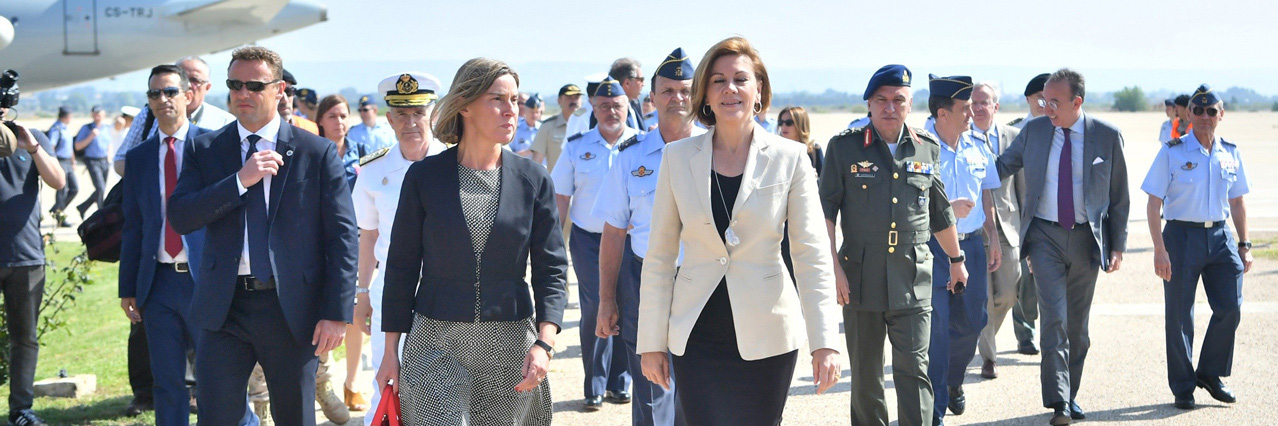
EU Defence Ministers participate in ‘EU CYBRID 2017’, the first ever strategic table-top cyber defence exercise jointly organised by the Estonian EU Presidency and EDA.
EDA’s Steering Board appoints Olli Ruutu as the Agency’s new Deputy Chief Executive as of March 2018. He previously served as the Deputy National Armaments Director at the Finnish Ministry of Defence and Director of the Materiel Unit at the Resource Policy Department.

EU and NATO Councils take EU-NATO cooperation to a new level by endorsing a new set of common proposals on the implementation of the July 2016 Joint Declaration. The initial 42 cooperation proposals endorsed in December 2016 are complemented by 32 new proposals, covering new topics such as counter-terrorism, women, peace and security and military mobility. EDA is involved in the implementation of 30 of the 74 proposals.
The Permanent Structured Cooperation (PESCO) in the area of security and defence policy is established by a Council decision, with 25 EU Member States participating. The European External Action Service (EEAS), including the EU Military Staff (EUMS), and EDA jointly act as the PESCO Secretariat. In this role, EDA supports the annual assessment of PESCO Member States’ contributions with regard to capabilities. The Agency also facilitates capability development projects under PESCO, in particular by coordinating the assessment of projects proposals in the area of capability development. EDA also support Member States in ensuring that there is no unnecessary duplication with existing initiatives also in other institutional contexts
EDA and the European Investment Bank (EIB) sign a Memorandum of Understanding to strengthen cooperation between the two institutions. As a first step, EDA and EIB envisage to work together on the setting up of a Cooperative Financial Mechanism (CFM) to support cooperative projects where unsynchronised defence budgets hinder or impede the launch or implementation of such projects.

EDA launches the 'European Funding Gateway' for defence, an online platform designed to help the defence sector (industry, research and technology organisations, academia, Ministries of Defence, Armed Forces) to access EU funding.
The Agency launches the EDA Defence Innovation Prize rewarding companies and research entities who propose innovative and ground-breaking technologies, products, processes or services applicable in the defence domain.
EDA publishes the 2018 calls for proposals for the EU’s Preparatory Action on Defence Research (PADR), focusing on three topics: European high-performance, trustable (re)configurable system-on-a-chip or system-in-package components for defence applications; European high power laser effector; Strategic technology foresight, tackling the issue of the critical defence technological dependencies for the EU.
The Head of the Agency, Federica Mogherini, announces an Action Plan on Military Mobility, based on EDA’s roadmap, identifying a series of operational measures to tackle physical, procedural or regulatory barriers which hamper military mobility. The Commission, the European External Action Service (EEAS) and EDA agree to work in close coordination with the Member States for the effective implementation of these actions.

EDA, the European Union Agency for Network and Information Security (ENISA), the European Cybercrime Centre (EC3) and the Computer Emergency Response Team for the EU Institutions, Agencies and Bodies (CERT-EU) sign a Memorandum of Understanding (MoU) to establish a cooperation framework between their organisations. The MoU aims at leveraging synergies between the four organisations and promoting cooperation on cyber security and cyber defence. More specifically, it focuses on five areas: exchange of information; education & training; cyber exercises; technical cooperation; and strategic and administrative matters.

EDA’s Steering Board in Capability Directors formation endorses the 2018 Capability Development Plan (CDP) and the associated 11 EU Capability Development Priorities which serves as a key reference for the implementation of major European defence initiatives launched following the 2016 EU Global Strategy, such as the Coordinated Annual Review on Defence (CARD), the Permanent Structured Cooperation (PESCO), and the European Defence Fund (EDF).
Six EDA Member States (Austria, Belgium, Estonia, Finland, Germany and Latvia) sign a Memorandum of Understanding (MoU) on the pooling and sharing of their respective cyber ranges capabilities. It is a first important outcome of EDA’s Cyber Ranges Federation Project launched in May 2017 in which a total of 11 EDA Member States participate.
The first Air-to-Air Refueling (AAR) conference in Europe is organised by EDA in Brussels, gathering some 200 experts, stakeholders, industry representatives and political/military decision-makers from the European, transatlantic and international AAR community.
EDA Chief Executive Jorge Domecq attends the 20th Birthday ceremony of the Organisation Conjointe de Coopération en matière d'Armement (OCCAR) in Bonn. He welcomes the close and productive working relationship established between the Agency and OCCAR based on the Administrative Arrangement signed in July 2012, and calls for an even stronger cooperation in the future to bring forward potential new collaborative defence equipment programmes.
EDA’s CARD Trial Run Report is discussed and welcomed at the Agency’s Ministerial Steering Board. Defence Ministers agree to establish CARD as a standing activity with the first full cycle to be launched in autumn 2019. The aim of CARD is to serve as a pathfinder and to provide the overview that will allow Member States to better coordinate their defence planning and spending and engage in collaborative projects, improving consistency in Member States defence spending and overall coherence of the European capability landscape.

The Cyber education, training, exercise and evaluation (ETEE) platform was launched at the European Security and Defence College (ESDC) with the support of EDA, the European External Action Service (EEAS) and the European Commission. The main task of the platform is the coordination of cyber security and defence training and education for EU Member States.
EDA’s Steering Board in Research and Technology Director’s composition validated the review outcome of the Overarching Strategic Research Agenda (OSRA), including the 139 developed Technology Building Blocks (TBBs). The updated OSRA version provides a necessary link between R&T efforts and the military tasks and long-term capability needs of the Capability Development Plan (CDP). Combining a top-down approach (from capability needs to technologies) and a bottom-up approach (from new emerging technologies to capabilities), OSRA aims at streamlining Europe’s defence research priorities and informing Member States’ decision-making process on defence research.
Emilio Fajardo joined EDA as the new Industry, Synergies & Enablers (ISE) Director as of 1 January 2019. He previously held the position of Director for Naval Systems and Head of the Hydrodynamics Research Centre at the National Institute for Aerospace Technologies (INTA) in Madrid.

A new cooperation arrangement was signed by EDA and ATHENA, the mechanism which handles the financing of common costs relating to EU military operations under the EU's common security and defence policy (CSDP). The new arrangement, which replaces the previous one signed in 2015, includes the option for any CSDP operation or mission commander to call upon EDA to provide technical and administrative support for their most complex procurement procedures.
EDA launched ‘IdentiFunding’, an online tool which allows defence-interested stakeholders (industry - including SMEs, Ministries of Defence, research and technology entities, universities, etc.) to quickly and easily identify existing EU funding schemes available for defence-related projects. The new application, which is accessible via EDA’s European Funding Gateway for Defence and the SME corner, performs an instant scan of all existing defence-related EU funding opportunities based on a project’s topic, scope, objectives as well as the participants involved.
More than 500 high-level representatives from Ministries of Defence, defence research institutes, industry, academia and the European institutions attended the “Capability-Driven Defence Research and Innovation” conference in Bucharest which was co-organised by EDA and the Romanian EU Presidency . The event showcased new prioritisation instruments for defence research, technology and innovation, highlighted potential synergies to be achieved on research priorities at national and European level and provided an update on the latest developments on the European Defence Fund.
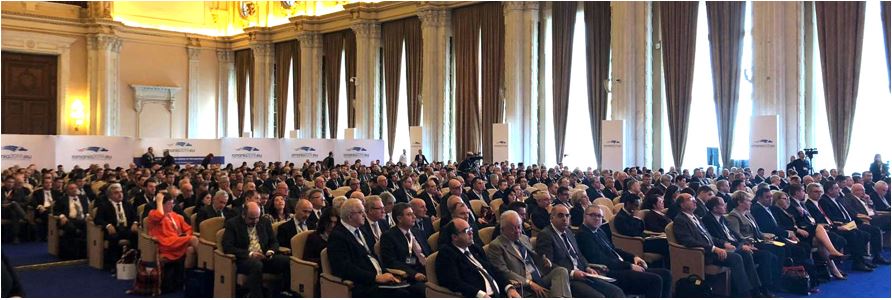
On 22 March, the HR/VP provided to the Council the first annual report on the status of PESCO implementation. The report is based on the assessment made by the PESCO Secretariat (in which EDA plays a central role, together with the European External Action Service including the EU Military Staff) of participating Member States’ National Implementation Plans (NIPs). On 8 April, the PESCO Secretariat provided to the Council the report on the Initial Lessons Identified on PESCO projects, which was developed in close consultation with the participating Member States. This report provided short term recommendations to be taken in consideration in view of future PESCO calls as well as and long-term recommendations.
Jean-François Ripoche joined EDA as the new Research, Technology and Innovation (RTI) Director. He previously held the position of Research and Technology Director at the Strategy Directorate of DGA (Direction générale de l'armement), the French Ministry of Defence Procurement Agency.

In the margins of EDA Steering Board, 23 Member States (Austria, Belgium, Bulgaria, Croatia, Cyprus, Czech Republic, Estonia, France, Germany, Greece, Hungary, Italy, Latvia, Lithuania, Luxembourg, Malta, the Netherlands, Poland, Portugal, Romania, Slovakia, Spain, Sweden) and EDA signed a new programme that will facilitate the granting of cross-border surface and air movement permissions. The programme is developed in the framework of EDA’s work on military mobility. It implements an important part of the ‘Action Plan on Military Mobility’ presented by the HR/VP and the Commission in March 2018.
The second phase of the Consultation Forum for Sustainable Energy in the Defence and Security Sector (CF SEDSS II) was successfully closed at a conference in Bucharest attended by Gabriel-Beniamin Leș, the Romanian Defence Minister, Dominique Ristori, the European Commission Director-General for Energy and Jorge Domecq, EDA’s Chief Executive. At the same event, the launch of the phase III of the Consultation Forum was announced. It focuses on …

On 25 June, EDA celebrated its 15th Anniversary with a ceremony in its premises attended by the Head of the Agency, Federica Mogherini, high representatives (Ministers, Deputy Ministers, State Secretaries, Chiefs of Defence, Ambassadors) from its 27 Member States and the four associated countries, the Chairman of the EU Military Committee, Deputy Secretary-Generals of the EEAS, the Director General of the EU Military Staff, several European Commissioners and Commission Director-Generals, Executive Directors and senior officials of all EU institutions and agencies, NATO senior representatives as well representatives from the European defence industry and the media. In her commemoration speech, Federica Mogherini, the Head of the Agency, recalled the tremendous progress made in European defence cooperation over recent years - especially since the publication of the EU Global Strategy in 2016 - and stressed the role played by EDA in this endeavour.
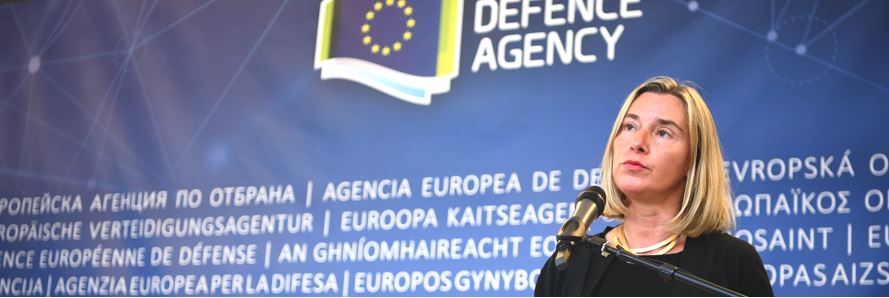
EDA’s Steering Board in Capability Directors composition endorsed the first edition of the Strategic Context Cases (SCC) which will guide the practical implementation of the 2018 EU Capability Development Priorities. The SCC should ensure the priorities are implemented in a way that improves the coherence of the European capability landscape and leads to cooperative projects which contribute to close identified capability shortfalls.
EDA’s Steering Board cleared the way for the new Multinational Helicopter Training Centre (MHTC) to be established in Sintra, Portugal. The opening of this new advanced tactical helicopter training facility is foreseen by the end of 2022. The MHTC will consist of office space for the technical, administrative and training delivery staff, simulator facilities and a dedicated accommodation block. It will also develop a more coordinated approach to European helicopter training and will try to harmonise national approaches and drive synergies with NATO doctrine.
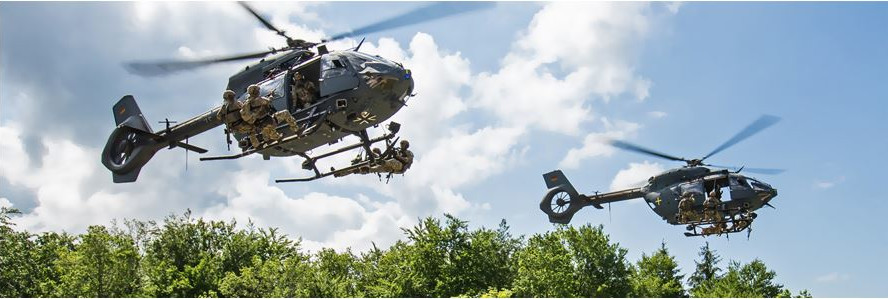
EDA and the European Air Transport Command (EATC) established a new cooperation framework, through an exchange of letters, that further strengthens the ties between the two. The exchange of letters, which took place at the EDA premises in the presence of EATC Commander Major General Laurent Marboeuf and EDA Chief Executive Jorge Domecq, builds on the already existing cooperation. The letters exchanged identify new areas for enhanced cooperation between the EDA and EATC such as air mobility, fixed-wing training cooperation, military aviation, military mobility and other cross-cutting activities.

The third phase of the Consultation Forum for Sustainable Energy in the Defence and Security Sector (CF SEDSS III) was launched at a meeting attended, inter alia, by Miguel Arias Cañete, the European Commissioner for Energy and Climate Action, and Jorge Domecq, EDA’s Chief Executive. Phase III will last for four years and address the implementation of the EU legal framework on energy efficiency, renewable energy and energy security in the defence and security sector as well as prepare the defence sector for new technologies such as digitalisation, artificial intelligence, e-mobility and other innovative energy systems.
